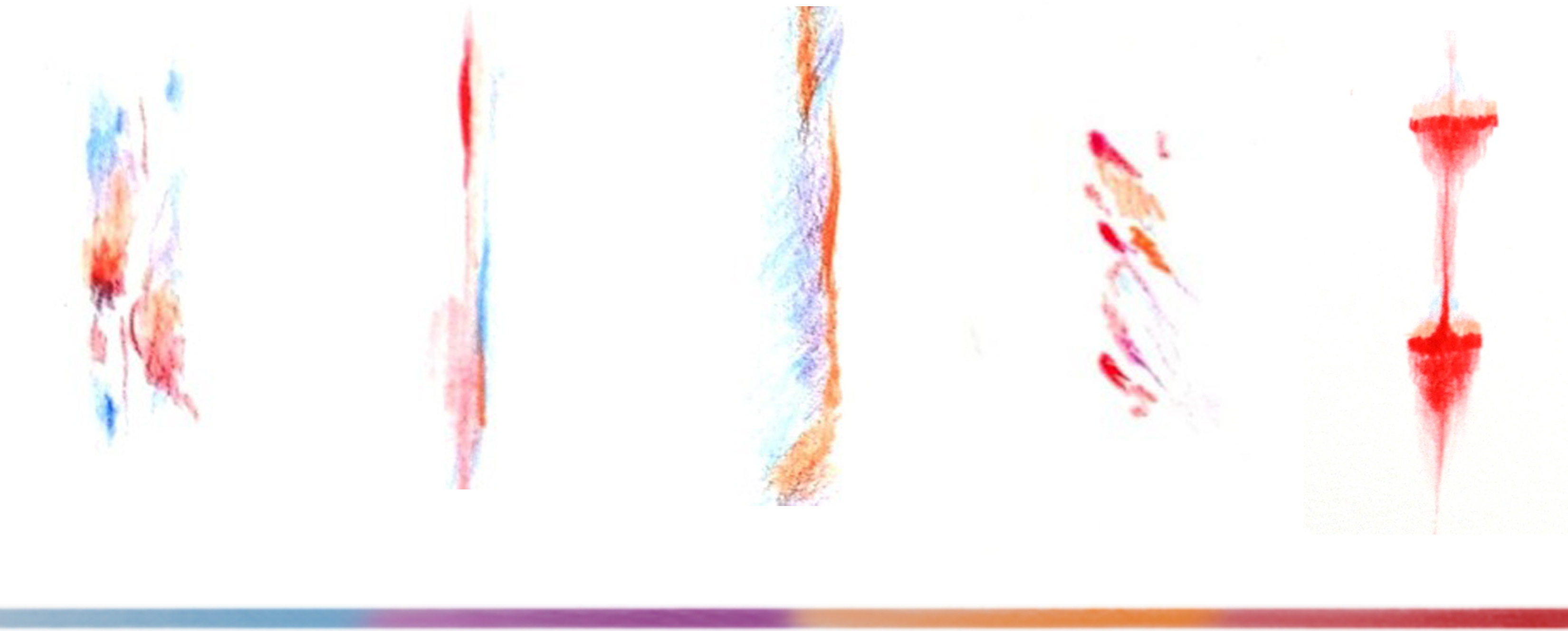Nicole De Brabandere
| Tactile Drawing | ||
|
Tactile Drawing activates touch to slow and complicate the co-composition of the rendering contour and visual information in sight drawing operations. Unlike sight drawing, where the contour aligns with the visibility of form, Tactile Drawing aligns the form of the rendering contour with the tactile information that is felt when moving the fingertip over a textured surface. In turn, Tactile Drawing generates a space for optic and haptic modes to mutually inform moving, touching, feeling and seeing. To amplify the dynamism of this process, the color gradations of the 'Universal Pain Self-Assessment Scale' are adapted so that changes in tactile feeling on the fingertip or different degrees of felt definition are rendered in different colours.
| ||
 Vaguely Articulated Sensation Sharply Articulated Sensation | ||
|
 | ||
| Tactile
Drawing was held at many locations including ArtEZ international gathering: Inventing Futures: Artistic Research with/in Educational Institutions, Arnhem, the Netherlands, 2013; Experiencing Space - Spacing Experience: Concepts, Practices and Materialities, the European Summer School in Cultural Studies (ESSCS) in cooperation with the Ruhrtriennale Festival, Bochum, Germany, 2013; Research Module for Master Class in Visual Communication, ZHdK, Zurich, Switzerland, 2013; Open Workshop, Corner College, Zurich, Switzerland, 2013. The above images demonstrate the participants' attempts to negotiate the visual articulation of sensation, as it is felt in continuous movement as it is felt on different areas of the fingertip. | ||
| In rendering the operation movement moves to feel the fine hairs on an arm smooth and elongate as they align with the drawing contour, or the excessive swell of bubble wrap when the contour slows over its raised surfaces. This process stretches and tenses tendencies of perceiving corporeal limits into new orientations. Apprehending the inscriptions after the fact, indexes, condenses and stabilizes the way these orientations establish terms for thinking and feeling with different aspects of the rendering ecology – between surface, line and sense, and the thought of sensation – which become germs with which to develop new experimental operations. | ||
|
| ||
|
|